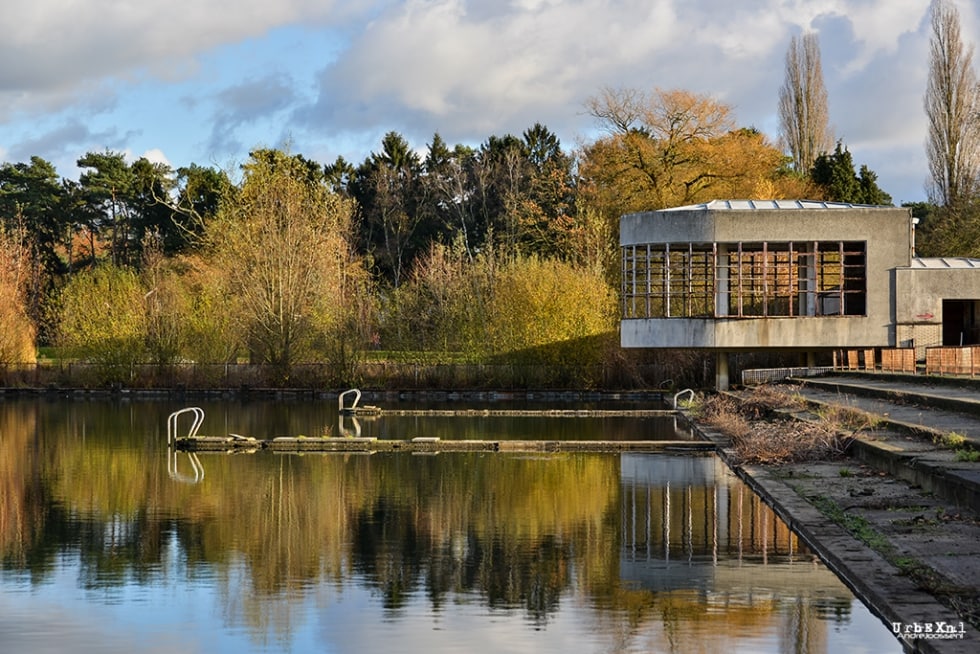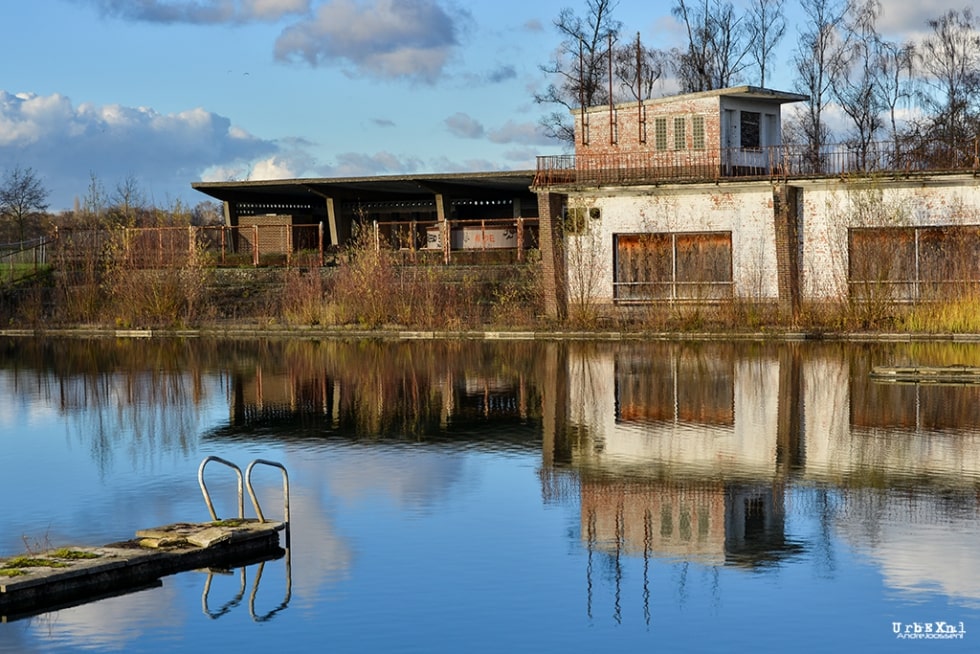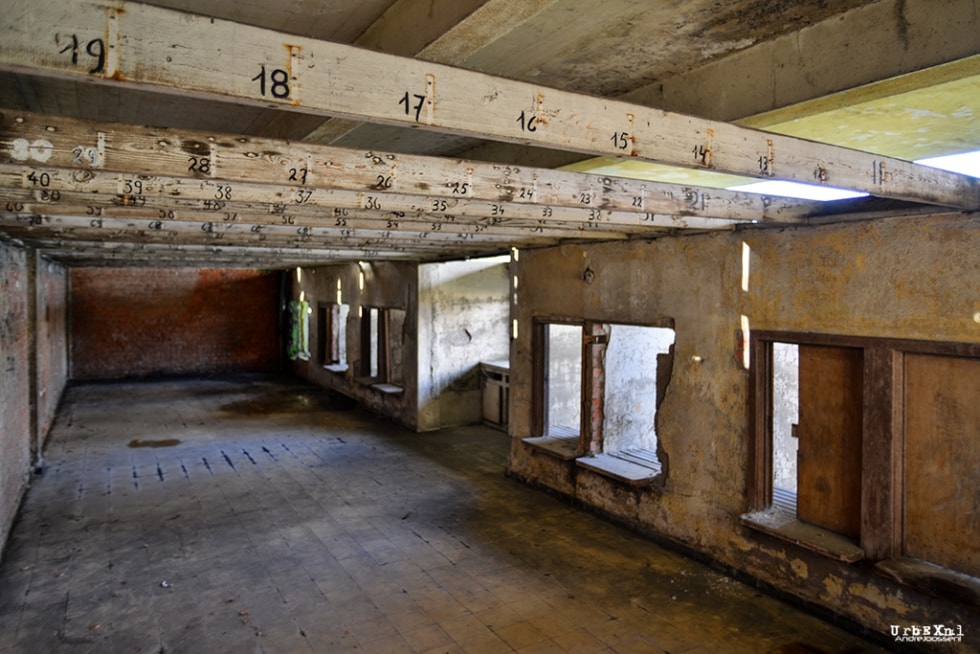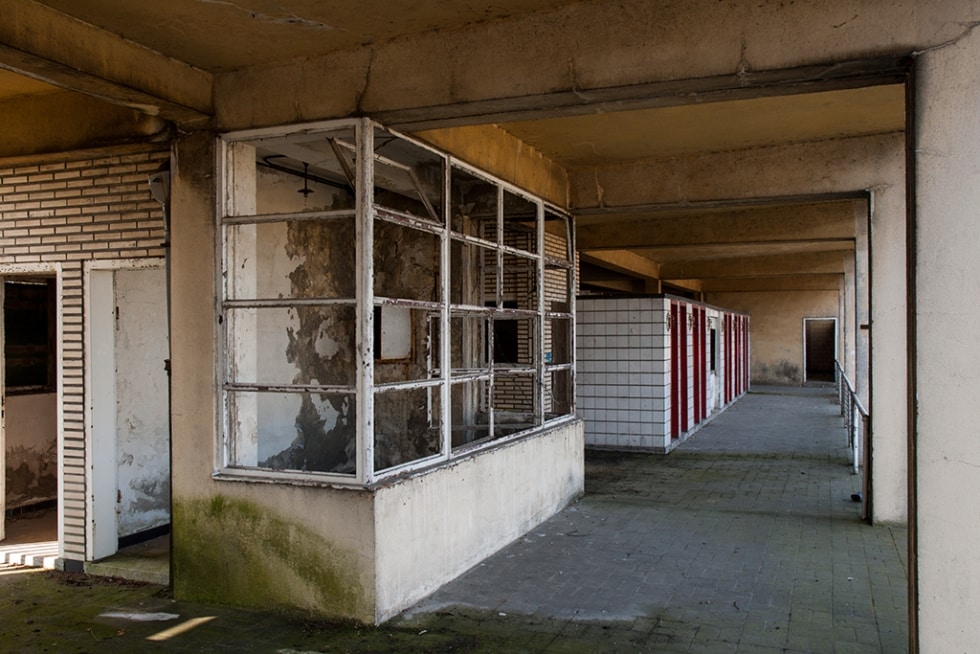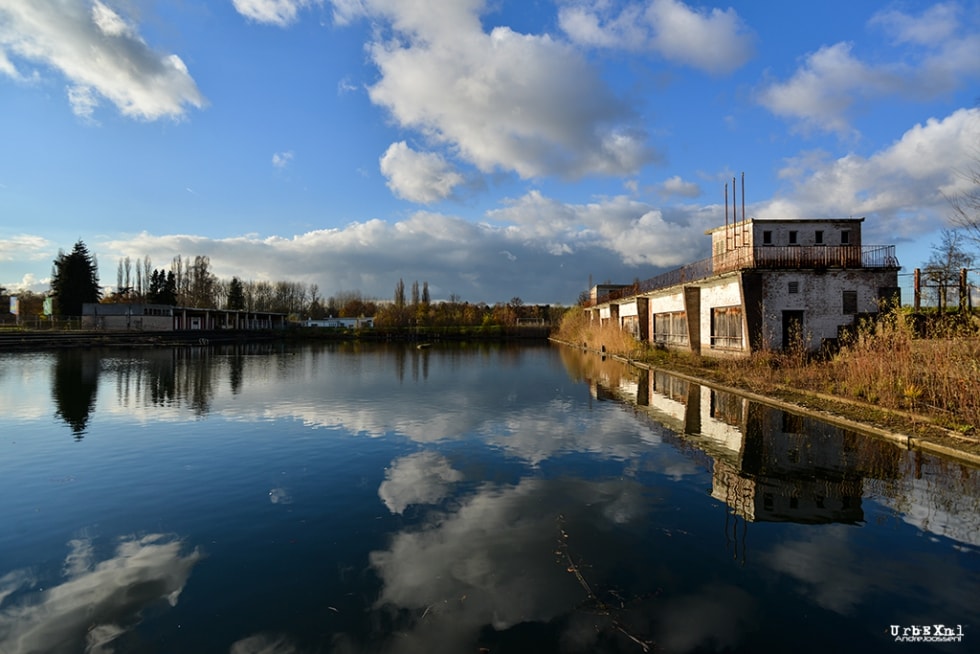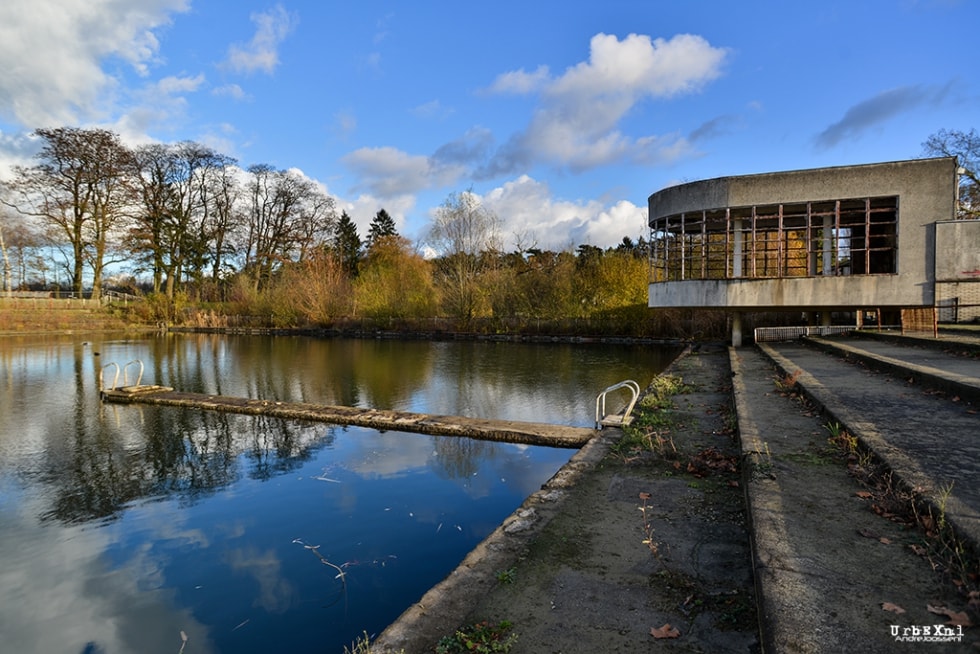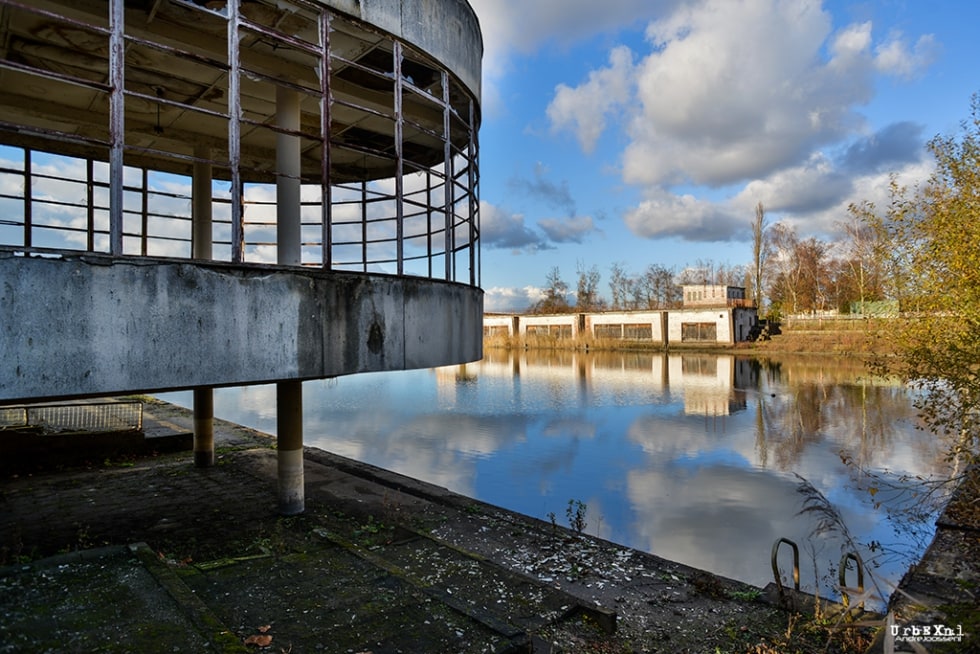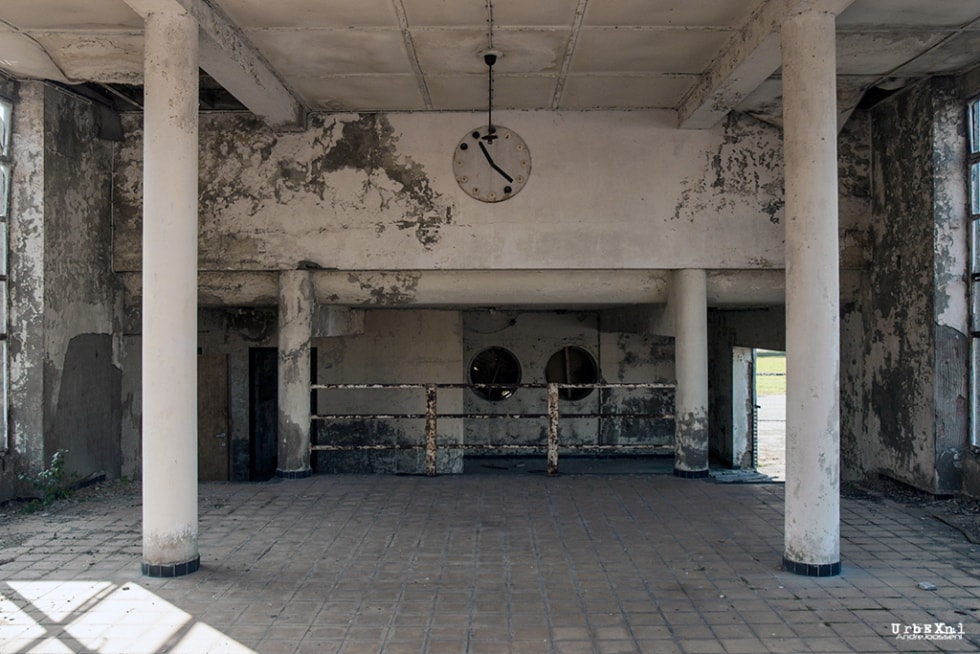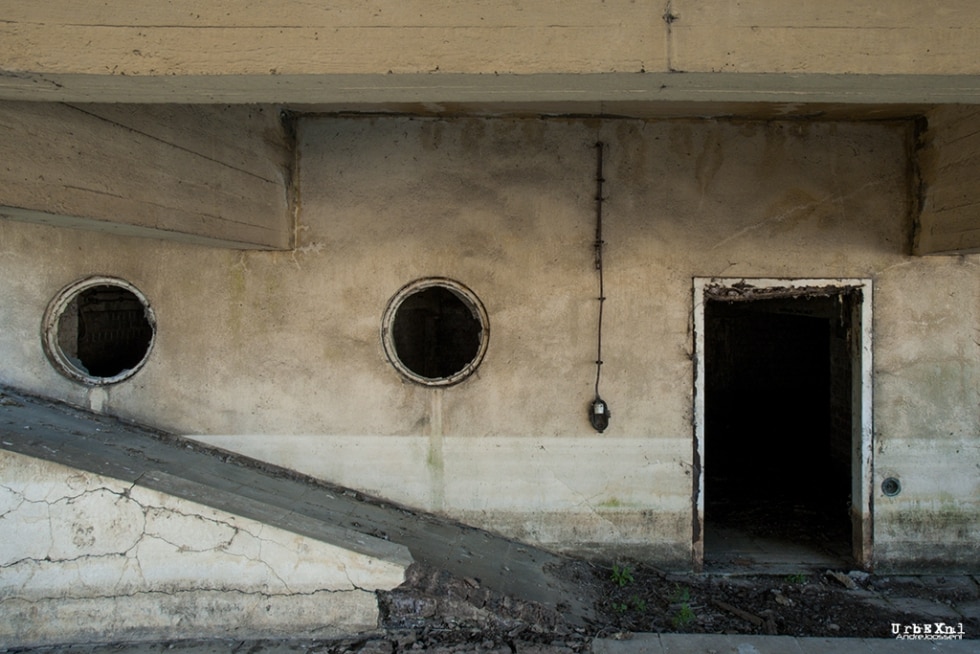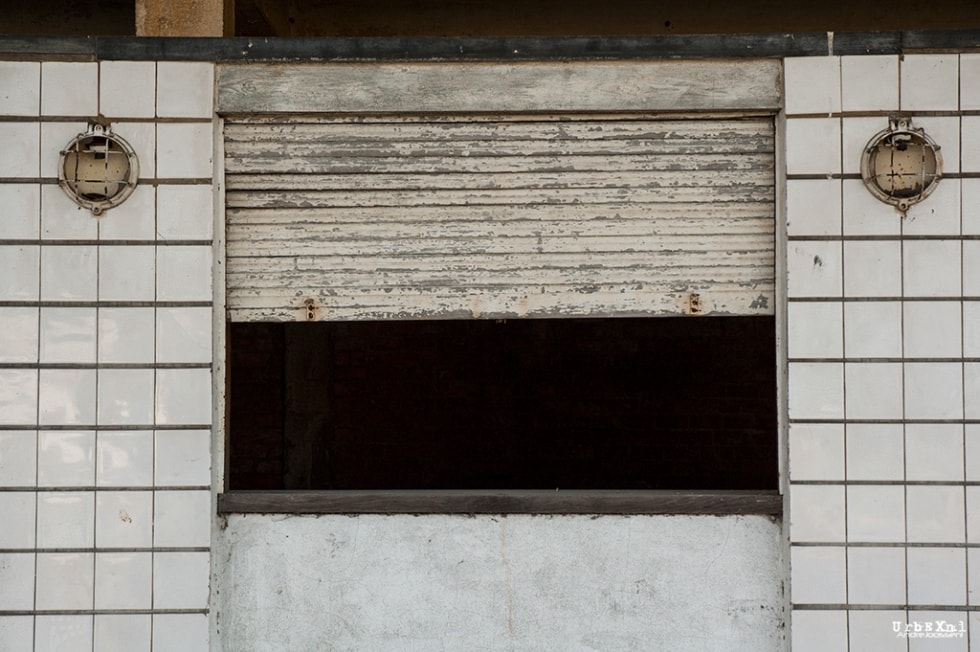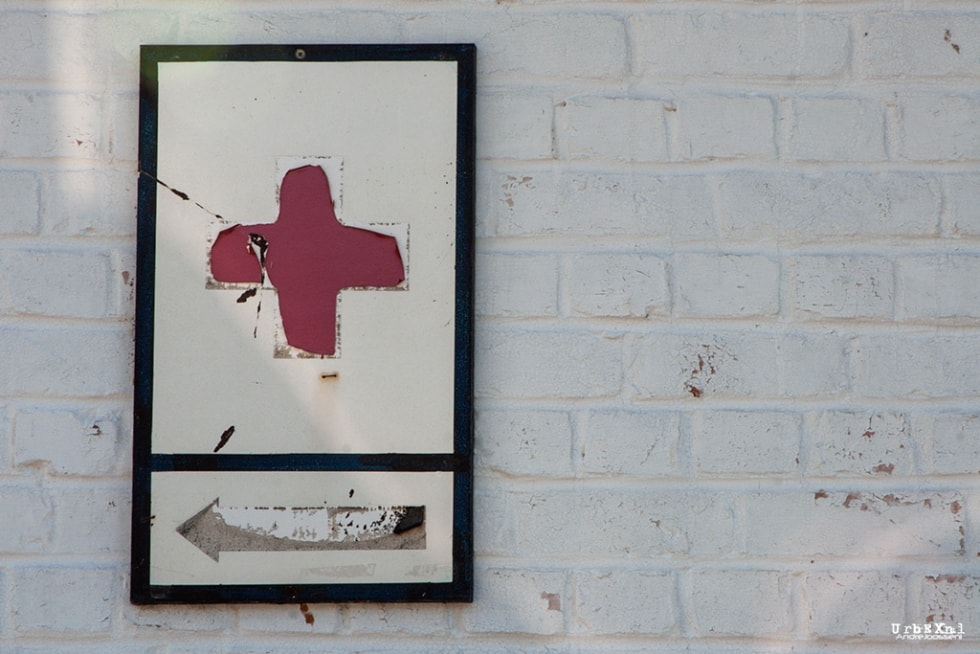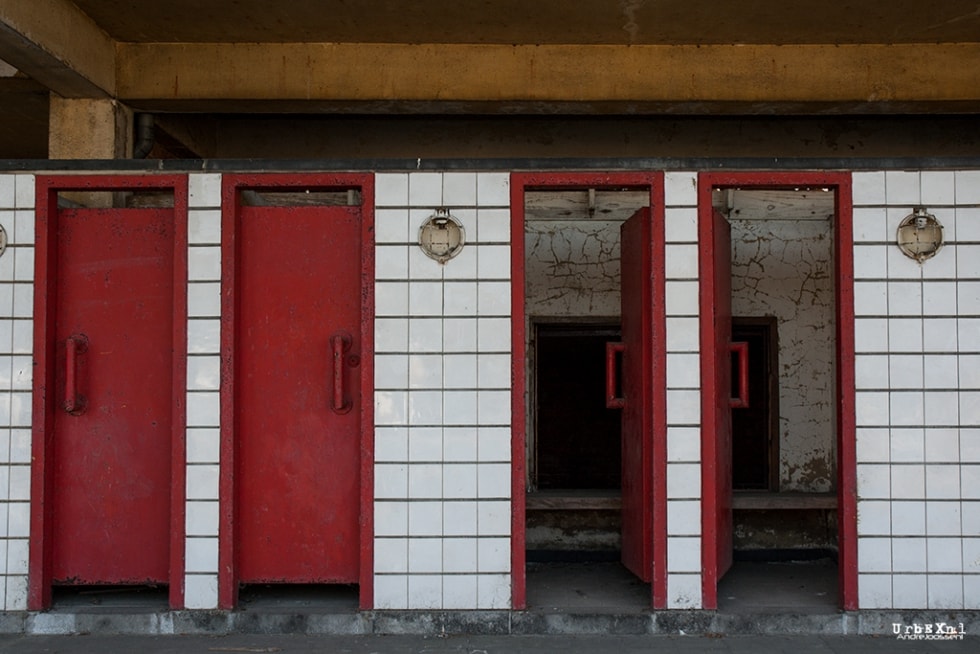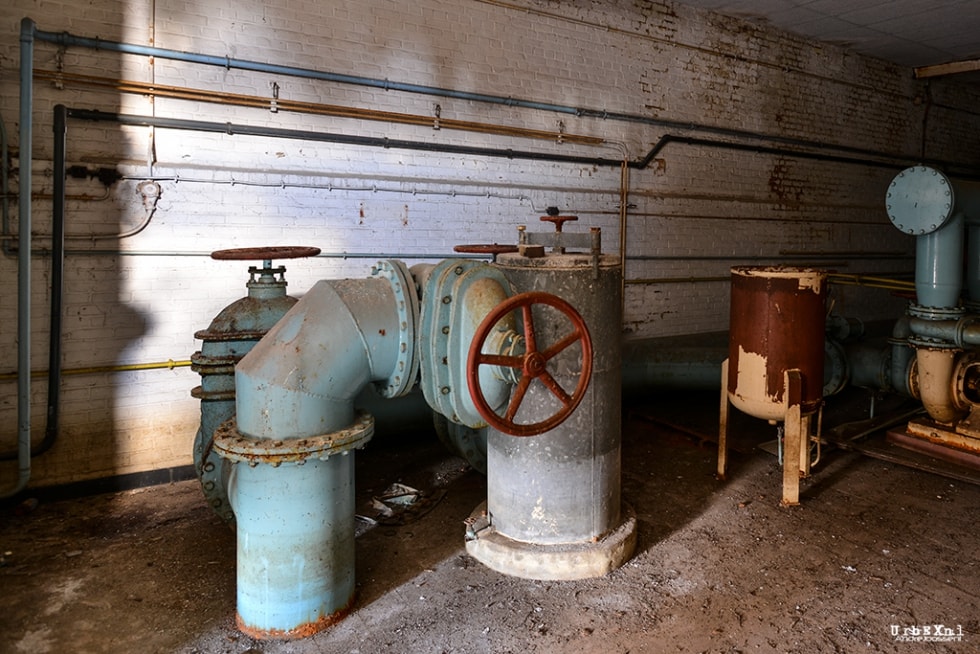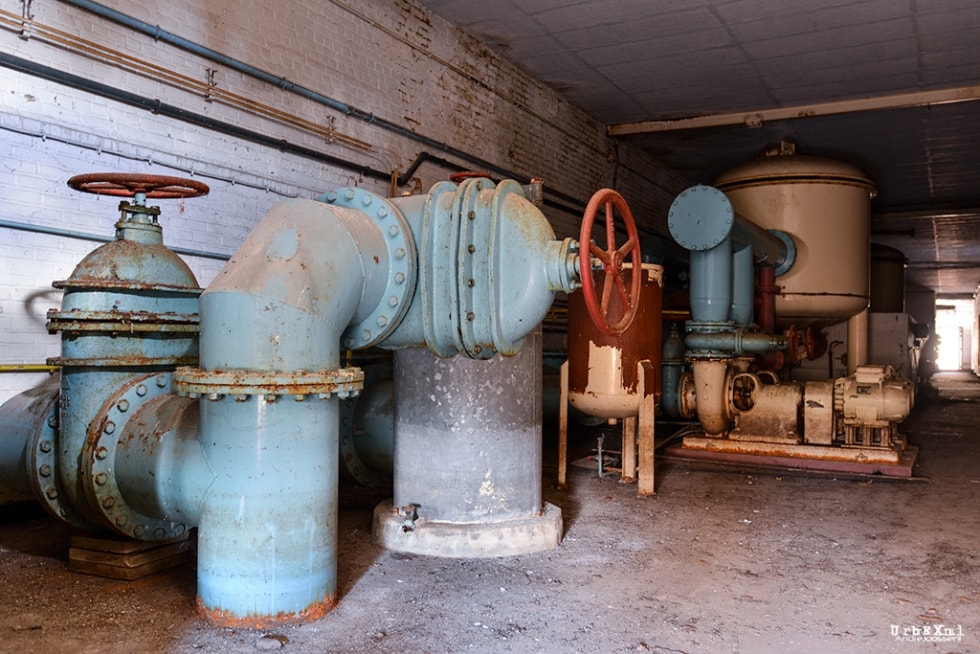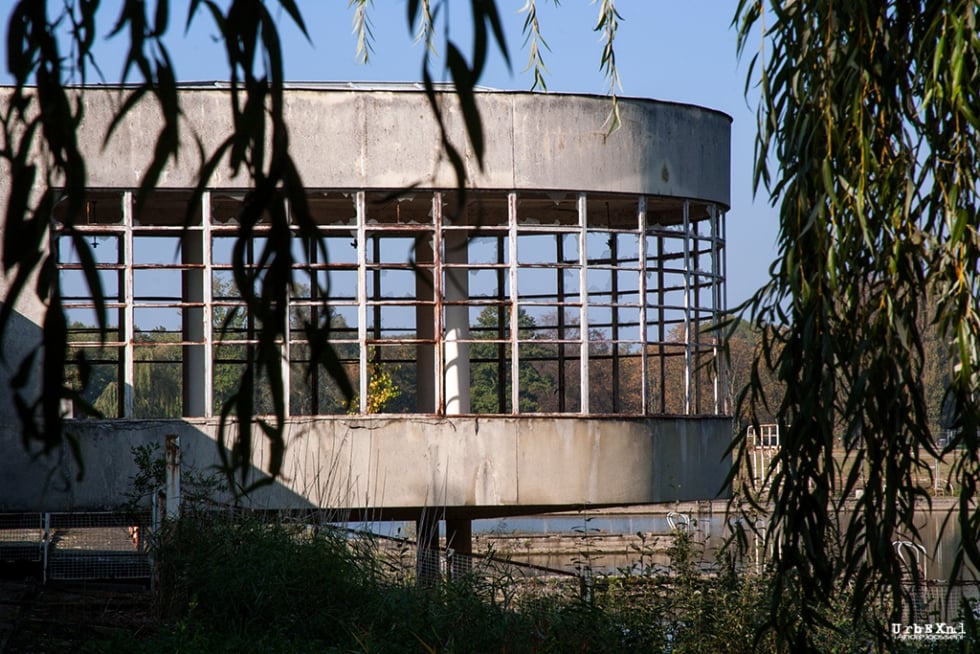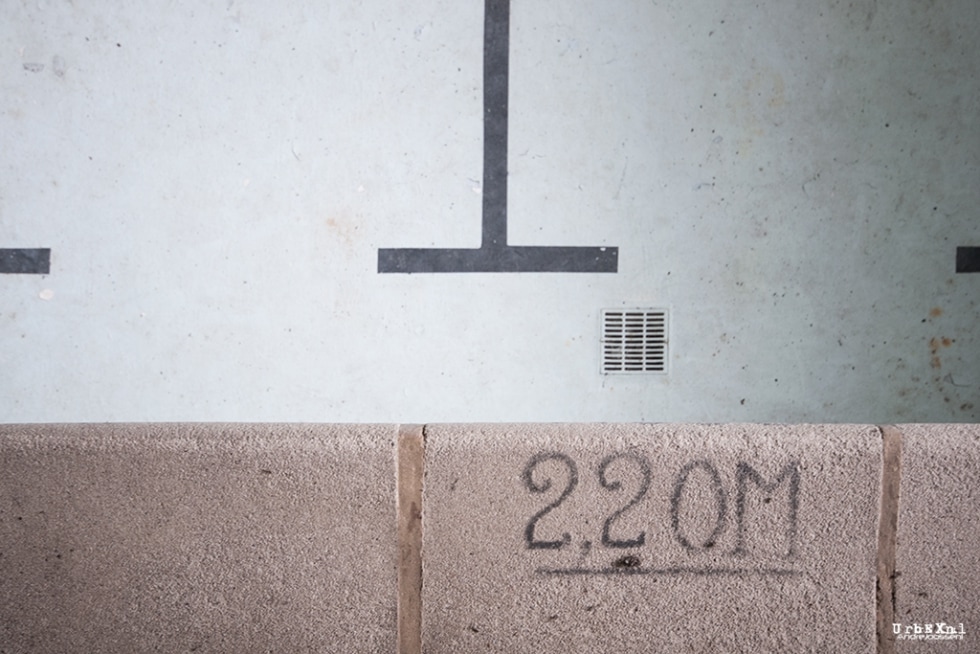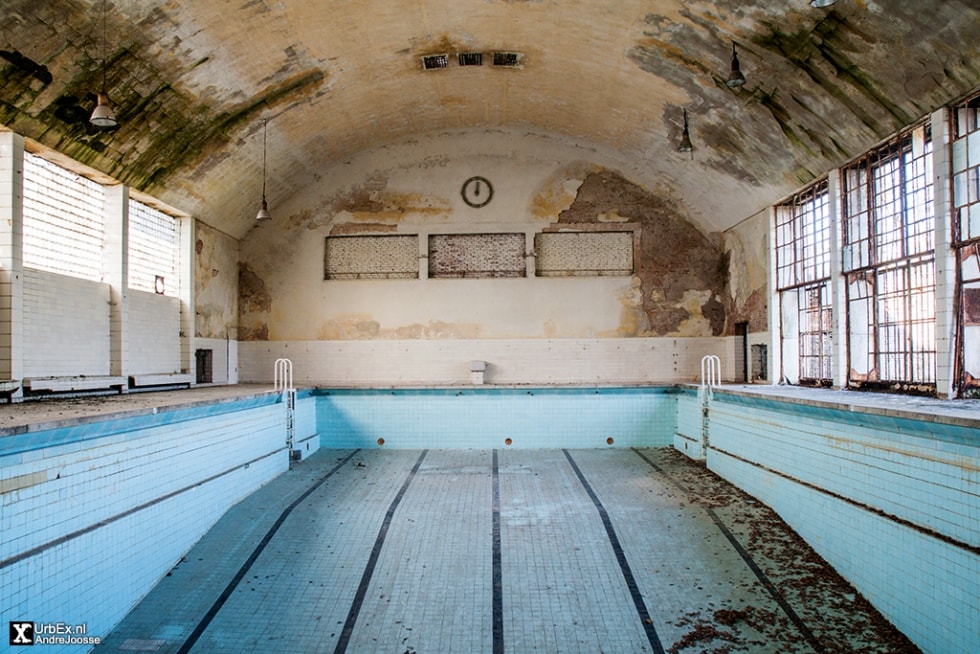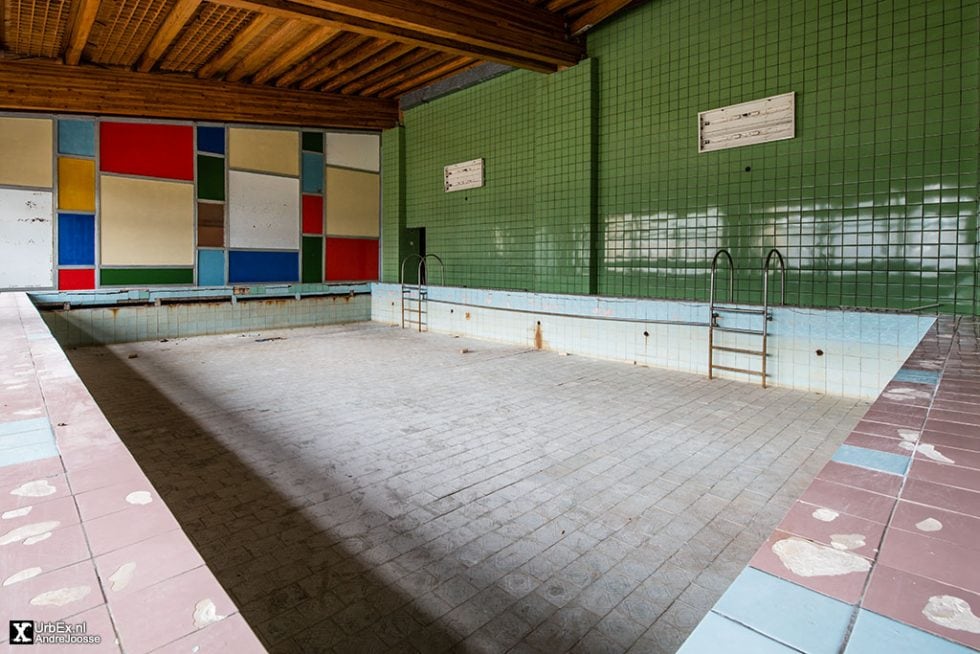Zwembad Domein Hofstade
THE ABANDONED POOL IN BELGIUM
‘Domein Hofstade’ was built in 1937 by architects Victor Bourgeois and Charles Van Nueten. The new leisure park was added to the lakes that were dug in the early 1900s.
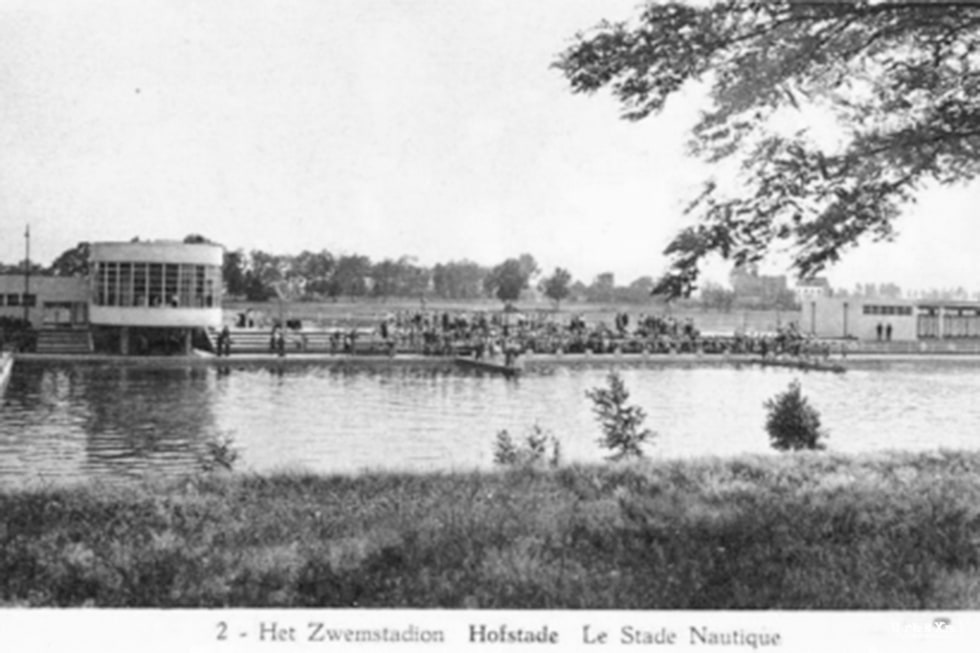
The history of ‘Bloso Domein Hofstade’ all starts in the early 1900s. Because of the growing use of the railway, the national railway company wanted to add a new line for freight trains. For safety, the railway is placed on an elevated bank. In fact, the earth used to build the bank is taken from the lands south of Hofstade. In 1902 the first earth is dug away. The digging stopped in 1912 when the First World War started. During these years, the holes filled with water, consequently creating two lakes. After the war, the digging continued and the lakes grew.
Hofstade Plage
In the 1920s, the domain spontaneously became a touristic place, but without facilities. More and more people went here in the hot summers to search for both cool water and recreation. However, in 1925 the city of Mechelen claimed the lakes, they were needed to provide the city of water. The lakes were fenced off, and armed guards protected the place. As a result, the local people and the press started a campaign to get the domain back.
It took until 1933 before Hofstade Plage, was a public park again. Thereupon, the site was opened by King Albert. A private company run the place and opened a small beach and some catering buildings around it. The following years, the place got busier day by day. About 35 thousand people enjoyed the beach on a sunny day. There was a roller skating rink, a cycling track for bikes and also a tennis courts. In addition, many restaurants and drinking establishments were grouped together in a square and named Vieux Marché.
The 1937 masterplan
A new master plan for the park was fully developed in 1937 by architect Victor Bourgeois. As a result, the cafés and dance halls were demolished. The new infrastructure had to be more sport-oriented. The added infrastructure also included a large outdoor swimming pool. The accompanying buildings were designed by the architect Charles Van Nueten. The beach building, already built in 1938, was designed by Maxime Wynants. There were several food and beverage outlets and an elevated promenade. The large boathouse was designed by Félix Milan.
Open air swimming pool
The open air swimming pool was built on the old beach. The pool was 100 by 50 meter and was 1.60 m deep. This open air pool was the biggest in Europe for many years. Hofstade had 200 changing rooms. During the Second World War the domain got in German hands, they used the field as a military site. In 1944 the Americans take over the domain, and it was used as an army truck repair site for various years. In 1978, the large outdoor pool was taken out of use, the buildings were abandoned in 1990. I visited ‘Domein Hofstade’ in 2006 and 2015.
